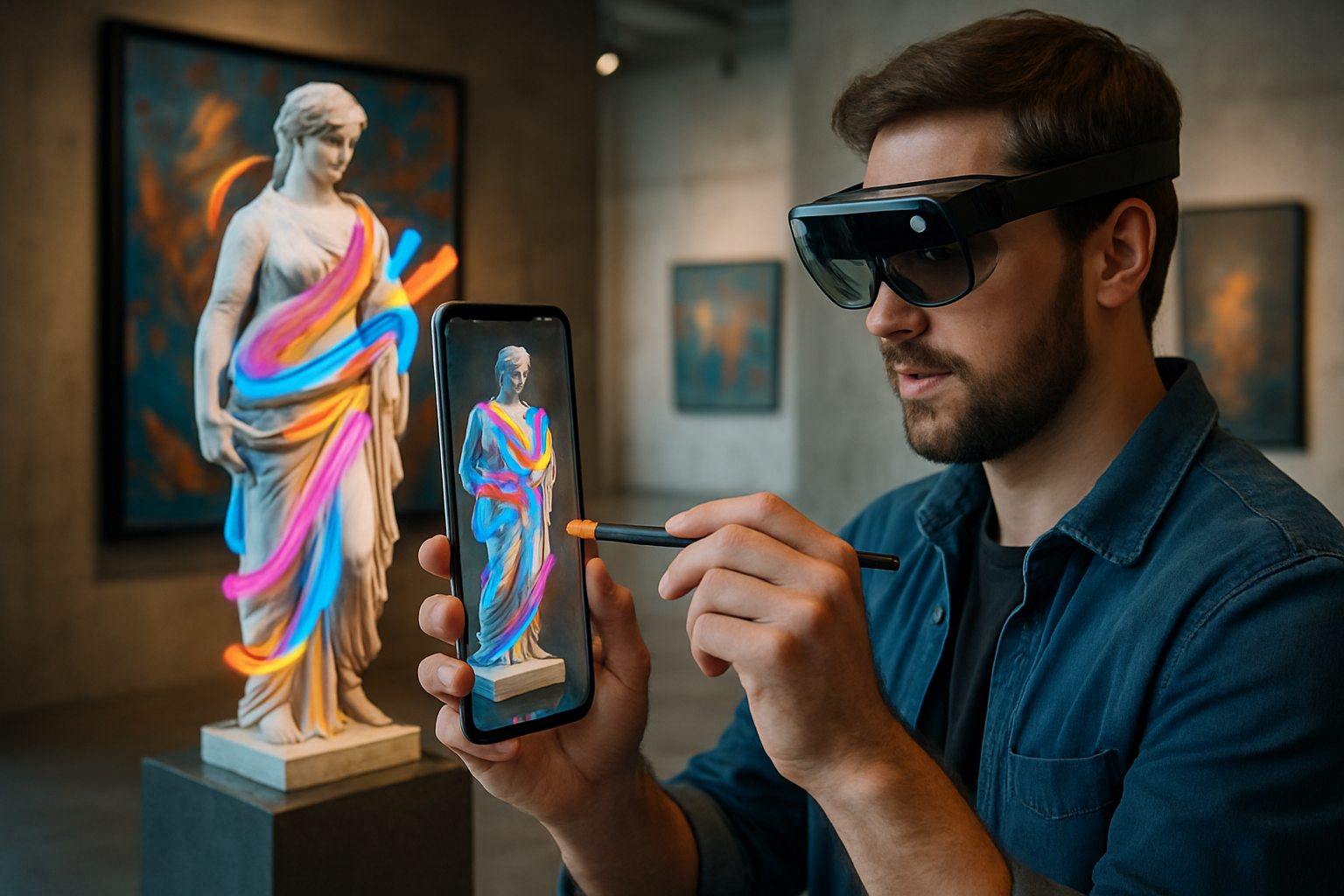The Avant-Garde Resurgence in Digital Performance Art
In an era of technological saturation, digital performance art is experiencing a groundbreaking renaissance. This avant-garde movement blends cutting-edge technology with traditional artistic expression, pushing the boundaries of what we consider art. From interactive installations to AI-driven performances, digital artists are redefining the relationship between creator, audience, and medium in ways that challenge our perceptions and engage our senses like never before.

Digital performance art encompasses a wide range of practices, including virtual reality installations, augmented reality experiences, and live-streamed interactive performances. These innovative approaches blur the lines between the physical and digital realms, creating a hybrid space where art can exist simultaneously in multiple dimensions.
Pioneers of the Digital Performance Movement
At the forefront of this artistic revolution are visionaries who seamlessly blend technology with creative expression. Artists like Rafaël Rozendaal, known for his website-specific artworks, challenge the notion of what constitutes a canvas. His pieces, which exist solely as URLs, invite viewers to interact with abstract, colorful compositions that respond to mouse movements and clicks.
Another trailblazer in the field is Sougwen Chung, whose performances involve collaborations with robotic arms. Chung’s work explores the intersection of human creativity and artificial intelligence, resulting in mesmerizing live drawing sessions where man and machine create art in tandem.
These artists, among others, are redefining the parameters of performance art, pushing it beyond the constraints of physical space and time.
The Role of Artificial Intelligence in Digital Performance
Artificial intelligence has become an integral tool in the digital artist’s arsenal. AI algorithms are being employed to generate unique visual and auditory experiences, create responsive environments, and even collaborate with human artists in real-time performances.
One notable example is the work of artist Mario Klingemann, who uses neural networks to create portraits that morph and evolve based on audience input. This level of interactivity not only engages viewers but also raises questions about authorship and the nature of creativity in the age of AI.
As AI technology continues to advance, we can expect to see even more innovative applications in digital performance art, further blurring the lines between human and machine creativity.
The Impact of Digital Performance Art on Traditional Institutions
The rise of digital performance art is challenging traditional art institutions to adapt and evolve. Museums and galleries are increasingly incorporating digital installations and interactive exhibits into their spaces, recognizing the need to engage with a tech-savvy audience.
Institutions like the New Museum in New York and the ZKM Center for Art and Media in Karlsruhe, Germany, have been at the forefront of this transition, dedicating significant resources to digital art exhibitions and performances. These efforts not only showcase cutting-edge works but also help legitimize digital performance art within the broader art world.
However, the integration of digital art into traditional spaces is not without its challenges. Issues of preservation, curation, and the ephemerality of digital works continue to be topics of debate among art professionals and institutions.
The Future of Digital Performance Art: Trends and Predictions
As technology continues to evolve at a rapid pace, the future of digital performance art looks increasingly exciting and unpredictable. Emerging technologies like 5G, quantum computing, and advanced haptic feedback systems promise to open up new possibilities for artistic expression and audience engagement.
One trend that is likely to gain traction is the use of blockchain technology in digital art. Non-fungible tokens (NFTs) have already made waves in the art world, offering new ways to authenticate and sell digital artworks. This technology could revolutionize how digital performances are monetized and distributed, potentially creating new economic models for artists working in the digital realm.
Another area of growth is the integration of biometric data into performances. Artists are exploring ways to incorporate audience heart rates, brain waves, and other physiological responses into their works, creating truly personalized and responsive experiences.
As virtual and augmented reality technologies become more sophisticated and accessible, we can expect to see more immersive digital performances that transport audiences to entirely new worlds. These experiences will challenge our perceptions of reality and push the boundaries of what is possible in art.
The avant-garde resurgence in digital performance art represents a exciting frontier in creative expression. As artists continue to explore the possibilities offered by new technologies, we can anticipate a future where the lines between the physical and digital worlds become increasingly blurred, and where art becomes more interactive, immersive, and transformative than ever before. This movement not only challenges our preconceptions about art but also offers a glimpse into the future of human-technology interaction, making it a fascinating area to watch in the coming years.





